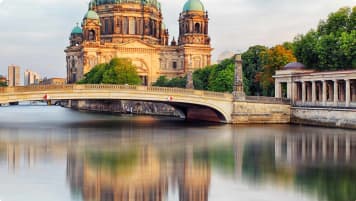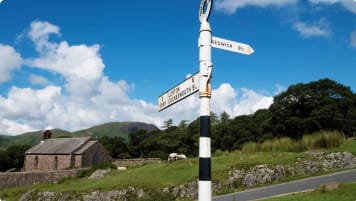History & European Pilgrim Walks
History & European Pilgrim Walks Walking pilgrimages provide solitude and tranquillity in an increasingly busy and fast-paced world. These walking tours follow ancient pilgrimage routes, giving the modern pilgrim the chance not only to meet new…
27 Aug 18 · 13 mins read
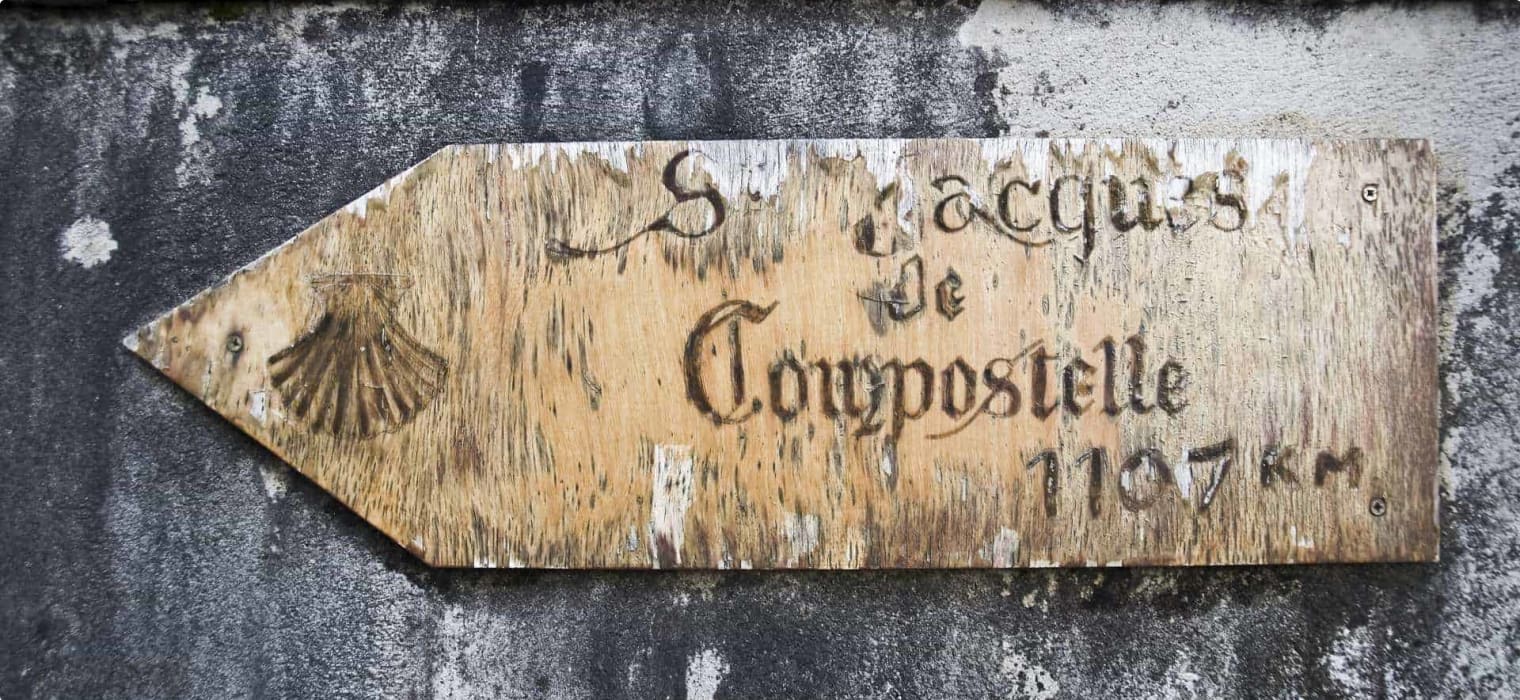
History & European Pilgrim Walks

Walking pilgrimages provide solitude and tranquillity in an increasingly busy and fast-paced world. These walking tours follow ancient pilgrimage routes, giving the modern pilgrim the chance not only to meet new friends, but also to deepen their knowledge about art, architecture, culture, and history. This article on pilgrim walks will follow in the footsteps of pilgrims and trace the paths across Europe and discuss their historical significance.
- Camino Frances (alternately known as the Camino de Santiago, the French Way, the Way of St. James, or simply, The Way);
- Via de la Plata, or the Silver Way;
- Via Coloniensis; and
- Via Francigena, or The Way Through France

Camino Frances: Pilgrims’ Walk from Bilbao to Santiago de Compostela
St. James (Santiago in Spanish) was one of the Twelve Apostles and is the national patron of Spain. He was said to have returned to Judea after preaching the Gospel in the Iberian Peninsula, and was consequently put to death by Herod. The apostle’s body, as tradition tells, was moved by boat to northern Spain and buried under the site of what is now the city of Santiago de Compostela. Pilgrimages to his sepulchre began following the discovery of his tomb in the ninth century.
Most travellers taking the Camino Frances (alternately known as the Camino de Santiago, the French Way, the Way of St. James, or simply, The Way) begin their journey to Santiago de Compostela at the traditional starting point of St-Jean-Pied-de-Port, a bustling French market town at the foot of the Pyrenees. With Odyssey Traveller, the journey begins in Bilbao, the largest city in the Basque County. Founded in the 13th Century by the Lord of Biscay, Don Diego López de Haro, Bilbao became one of the most important ports in Spain and experienced rapid industrialization due to exports of its iron ore and development of industries. This growth attracted workers from all over Spain. The steel and shipbuilding industries have declined in the 60s and 70s, but Bilbao is firmly back on the map as a tourist destination, especially after the opening of the Guggenheim Museum Bilbao in 1997.
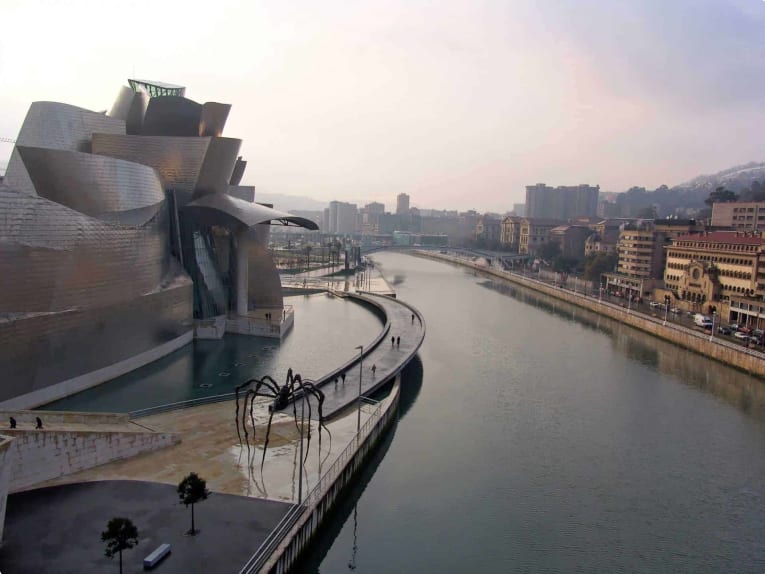
Pamplona, the capital of Navarre, is another stop on this tour. The city is famous worldwide for the running of the bulls, and for being one of Ernest Hemingway’s favourite cities. Hemingway visited Pamplona numerous times and wrote about the city in his first novel, The Sun Also Rises. Travellers today can walk around Pamplona following the writer’s footsteps.
Travellers will also visit the medieval town of Burgos, which served as an important commercial centre and capital of the unified kingdoms of Castille and Leon for five centuries. The city’s significance in the Middle Ages can be seen in its lush architecture and notable pieces of art. The Burgos Cathedral, constructed from 1221 to 1567, is hailed as a comprehensive example of the evolution of Gothic architecture, leading to its being listed by UNESCO as a World Heritage Site.
Another important Gothic landmark is the 15th century Cartuja de Milaflores (Milaflores Charterhouse), once the recreational residence of Henry III of Spain, restored by his son John II with the help of Spain’s top architects, sculptures, and painters.
Travellers move on to Leon, originally a Roman military encampment established in 29 BC and is now home to a wealth of historic buildings and artwork. (Leon is also a stop on the Via de la Plata; see next section.)
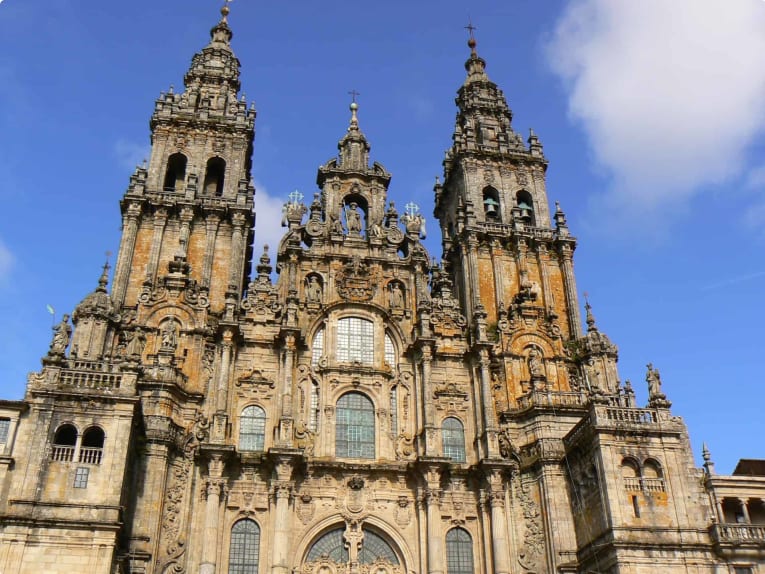
Santiago de Compostela is the final stop of the journey. Travellers pass into the old city through the Puerto del Camino to the route’s ultimate destination, the Santiago Cathedral. Take in the sensorial pleasures of this historic location, from the intricate details of the cathedral’s Baroque-style façade, to the scented smoke pouring out from the botafumeiro (smoke belcher), the cathedral’s 53-kilogram (117-lb) incense holder that had to be hauled by eight men.

Via de la Plata: Pilgrims’ Walk from Seville to Leon

Another pilgrimage route in Spain leading to Santiago de Compostela is the Via de la Plata. This route goes south to north, from the Andalusian capital of Seville to Leon, where it merges with the well-known and well-trodden Camino Frances.
Via de la Plata’s name translates to “the Silver Way” but it has nothing to do with the extraction or trade of this precious metal. The plata in its name most likely originates from the Latin platea (“wide road”) or the Arabic ballatta (“road”).
It is an ancient Roman causeway which has been used by Roman legions, the Islamic forces advancing into northern Spain, and by the Spanish themselves during the Reconquista to recapture territory. Following Spanish victory, the route was used once again by Christian devotees making their way to St. James’ shrine.
Although not as famous as the Camino Frances, the Via de la Plata has its own tranquil charm. The path, which goes through the scenic rural countryside, has fewer villages and may make it attractive to travellers who wish to walk a quieter, less-trodden route.
It is also undoubtedly rich in heritage as three of the seven towns on the Silver Way are included in the list of UNESCO Heritage sites—Mérida (listed in 1993), Caceres (1986), and Salamanca (1988). Seville, on its own, has three UNESCO Heritage sites listed in 1987.

Travellers can’t ask for a better starting point for their journey. Founded as the Roman city Hispalis and now the capital of the Andalusia region, the lively and disarming city of Seville is itself a popular tourist destination. Forming a monumental complex in the heart of Seville are the three UNESCO Heritage sites: the Seville Cathedral with the Giralda minaret, the Alcázar (fortress), and the Archivo de Indias.
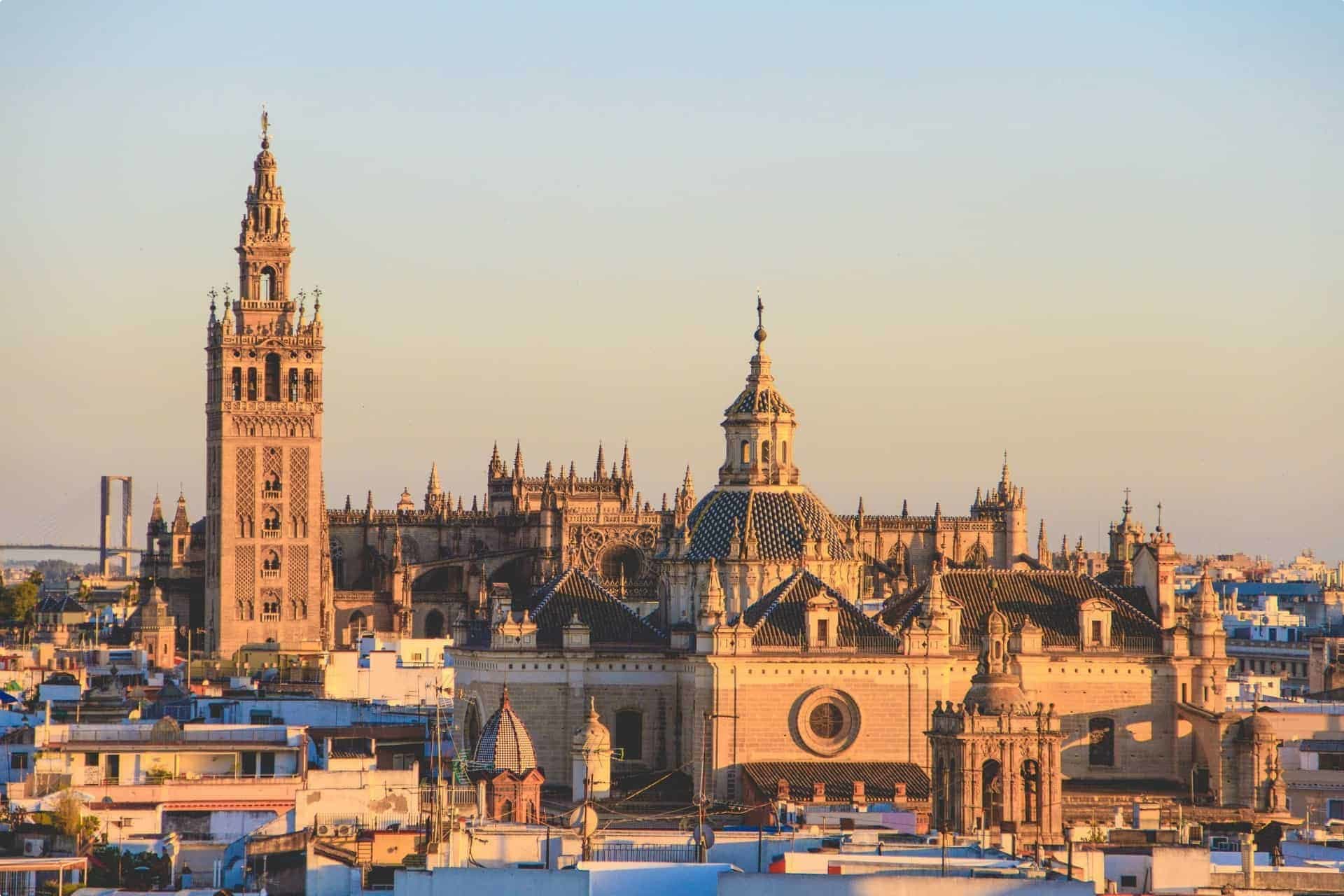
The Seville Cathedral is the largest Gothic cathedral in the world with its Giralda tower standing at 96 meters. Once an Almohad mosque, it was turned into a Catholic Cathedral following the Reconquista in 1248 and now holds the remains of Juan of Aragon, son of Ferdinand and Isabella, and Christopher Columbus. The Alcázar (fortress) of Seville, imbued with Moorish influences, is the oldest royal palace still in use in Europe. The Lonja, which became the Archivo de Indias (General Archive of the Indies), contains valuable documents illustrating the reach of the Spanish Empire in the Americas and in Asia.
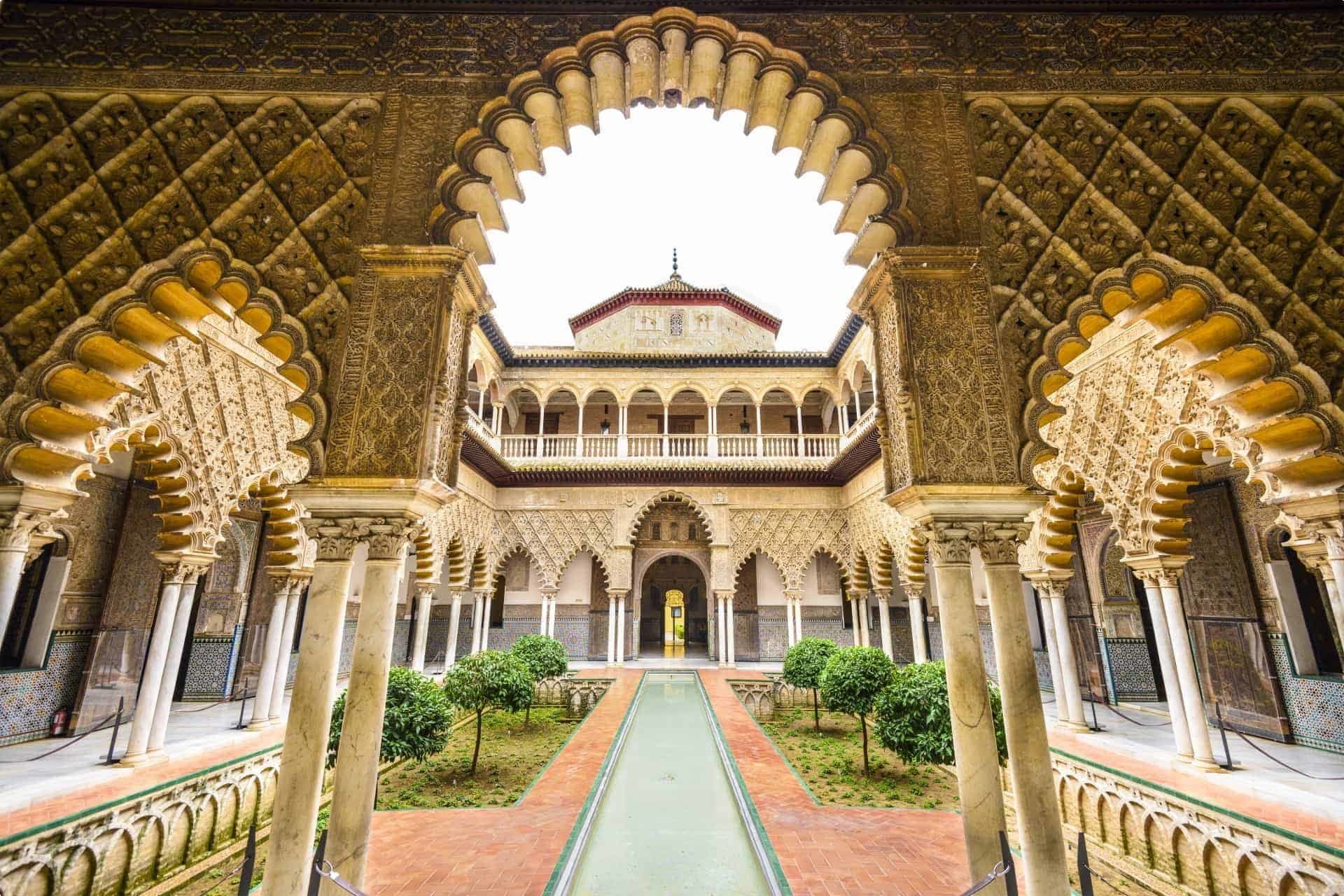
Crossing the bridge over Guandalquivir River, the longest river in the Iberian Peninsula, travellers entering Santiponce can view the 14th century San Isidoro del Campo Monastery, listed by Spain as a Historic Artistic Site of National Interest (Bien de Interés Cultural) in 1872. Built on the site of a Mozarab hermitage, it was said to be where San Isidoro was buried until he was moved to Leon in 1063.
Just 10 kilometres (or 6 miles) outside Seville, directly on the route of the Via de la Plata, lies the ruins of the ancient Roman settlement of Italica, with beautiful mosaic floors and an impressive and well-preserved Roman theatre. Founded in 206 BC, Italica was the birthplace of two Roman emperors, Trajan (born 53 AD) and his nephew Hadrian (76 AD).
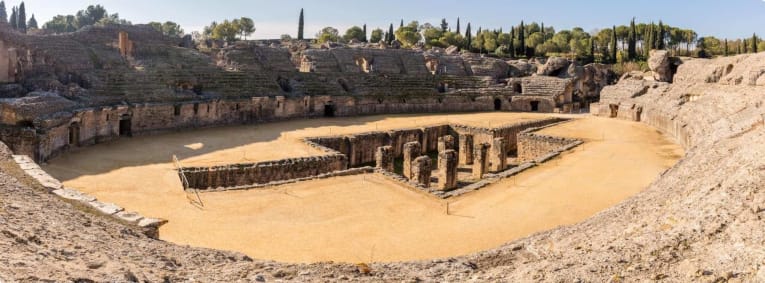

Travellers will continue on to Zafra, sitting at the foot of the mountains of the Sierra de Castellar. Zafra is dominated by two interconnected squares, the Plazas Grande and Chica, and its 15th century Alcázar, once used by the Dukes of Feria and now restored and converted into a hotel (the Parador de Turismo). Zafra shares architectural similarities with Seville, and is often referred to as “La Sevilla Chica” or “little Seville”.
To enter Mérida, travellers will take the Puente Romano, an important Roman bridge built in the first century over the Guadiana River. The granite bridge stretches nearly a kilometre (or half a mile) and is supported by 60 arches. Mérida, the capital of the Extremadura region, was established by the Romans on the banks of the river at an important junction linking Salamanca with Italica. Its modern name is derived from its Roman title “Emerita Augusta”, after the Emperor Augustus. The strong Roman influences are very apparent in the city, from the bronze sculpture of Remus and Romulus suckling a wolf at the far end of the Puente Romano, to the Roman theatre built for an audience of 6,000 still standing in this modern city.
Connected to the theatre through a tunnel is the Amphitheatre, which once witnessed gladiatorial combat and chariot races during the city’s days as a Roman territory. Another well-preserved Roman monument to visit is the Roman Circus of Merida, which used to house 30,000 spectators. Near the river is the archaeological area of Moreria, which gives travellers an idea of the evolution of the city from Roman to modern times.

Travellers can walk from Merida to Proserpina along the aqueduct called Los Milagros (“the miracles”) because of its impressive construction.
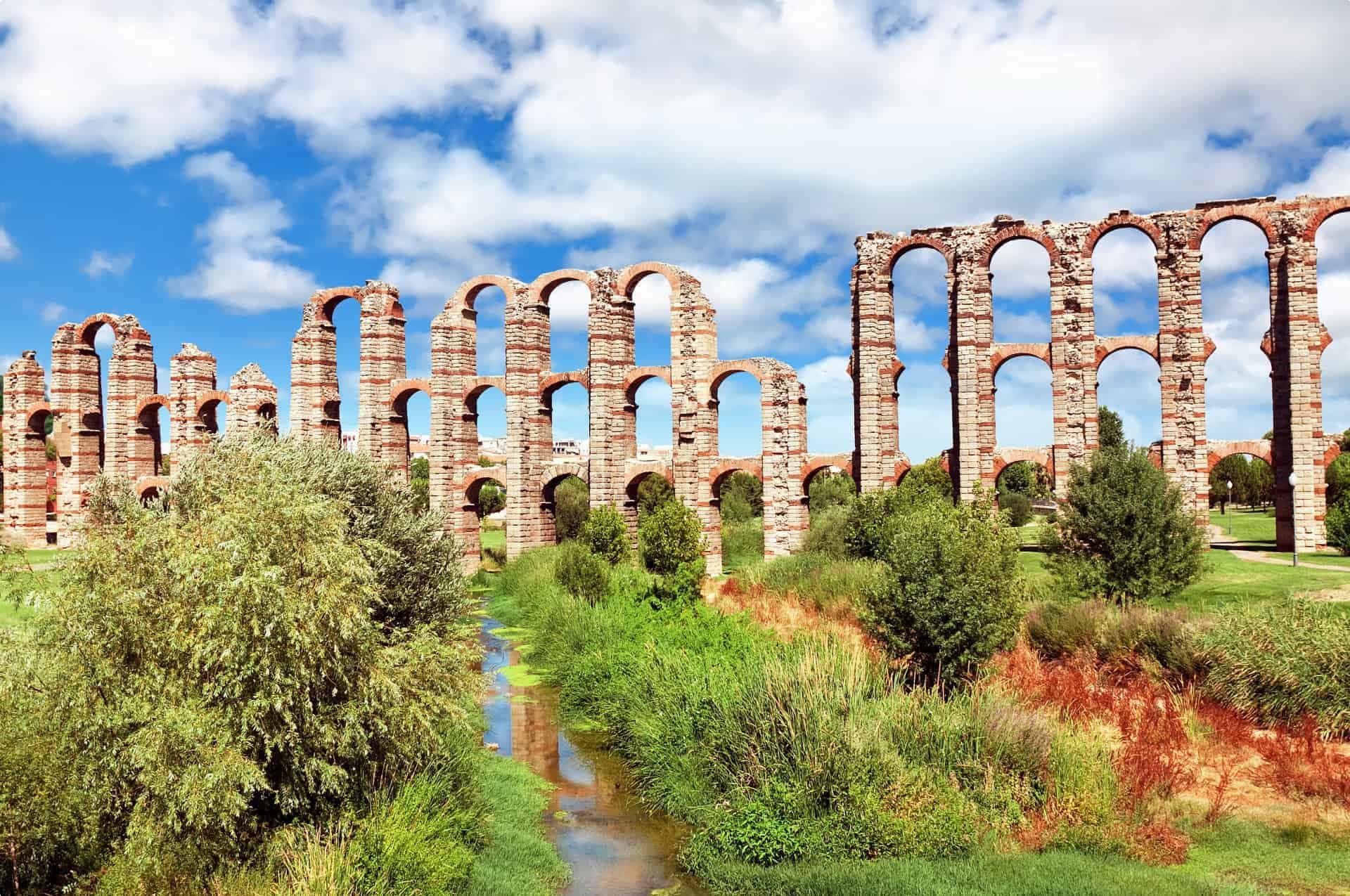
The 10-km aqueduct was used to transport water from the Proserpina dam, an earth dam built by the Romans in the 1st century, to Merida. The earth dam was so exquisitely built that it still stands today.

From Mérida, travellers move on to Caceres, with a rich history reflected in the blend of Roman, Islamic, Gothic, and Italian Renaissance styles in its architecture.
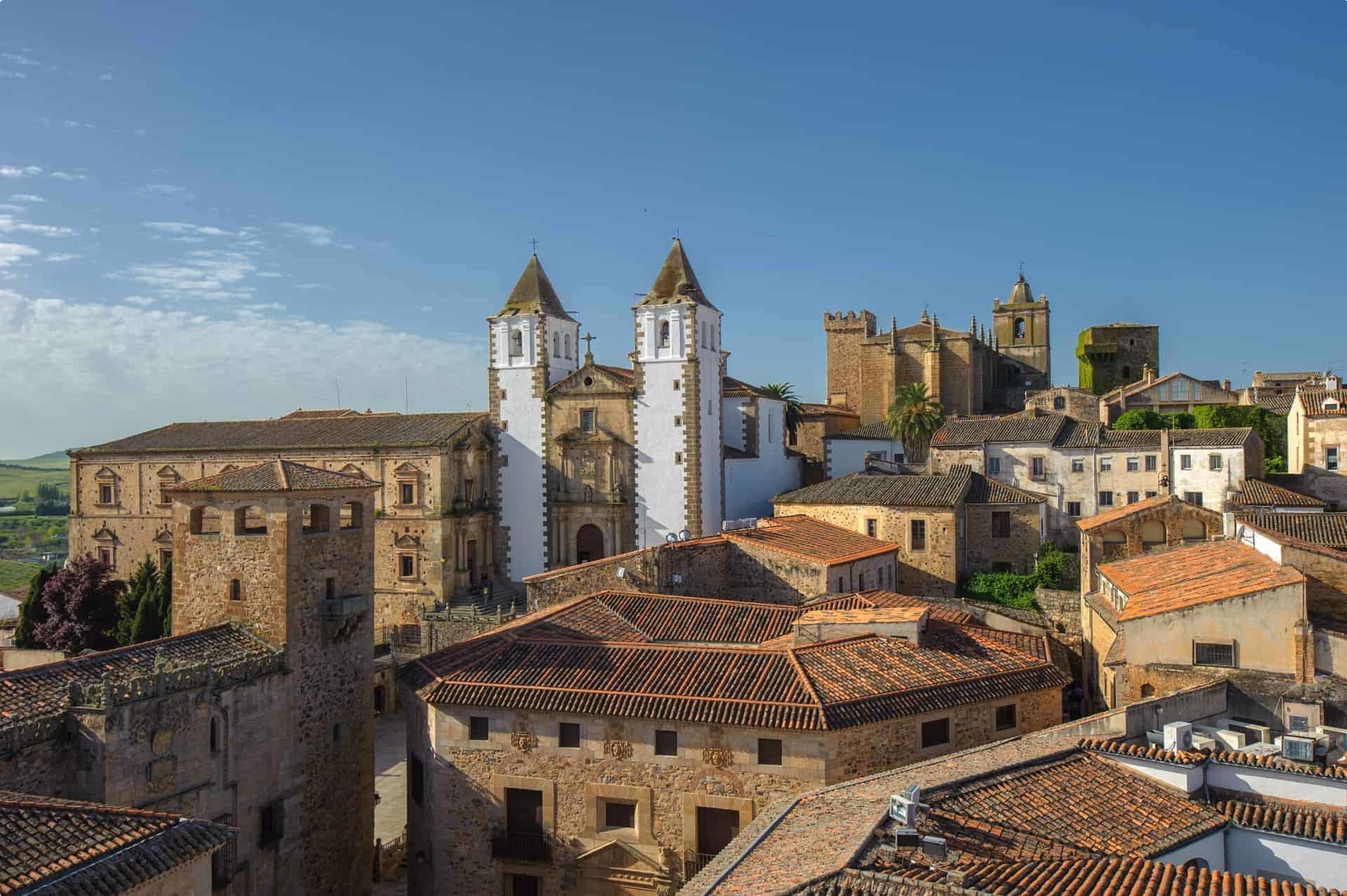
Originally a Celtic settlement, it was occupied by the Romans and named “Castra Caeclii” after one of its commanders. Its name is derived from the Arabic “Al Qazris”, the title bestowed by the Moorish forces who took over the city after the Romans.
Travellers can view the vast collections inside Museo de Caceres. The museum is housed inside Casa de las Veletas (House of the Weather Vanes), a 16th century palace built on the site of a Moorish fortification, of which only the cistern (underground freshwater reservoir) remains.
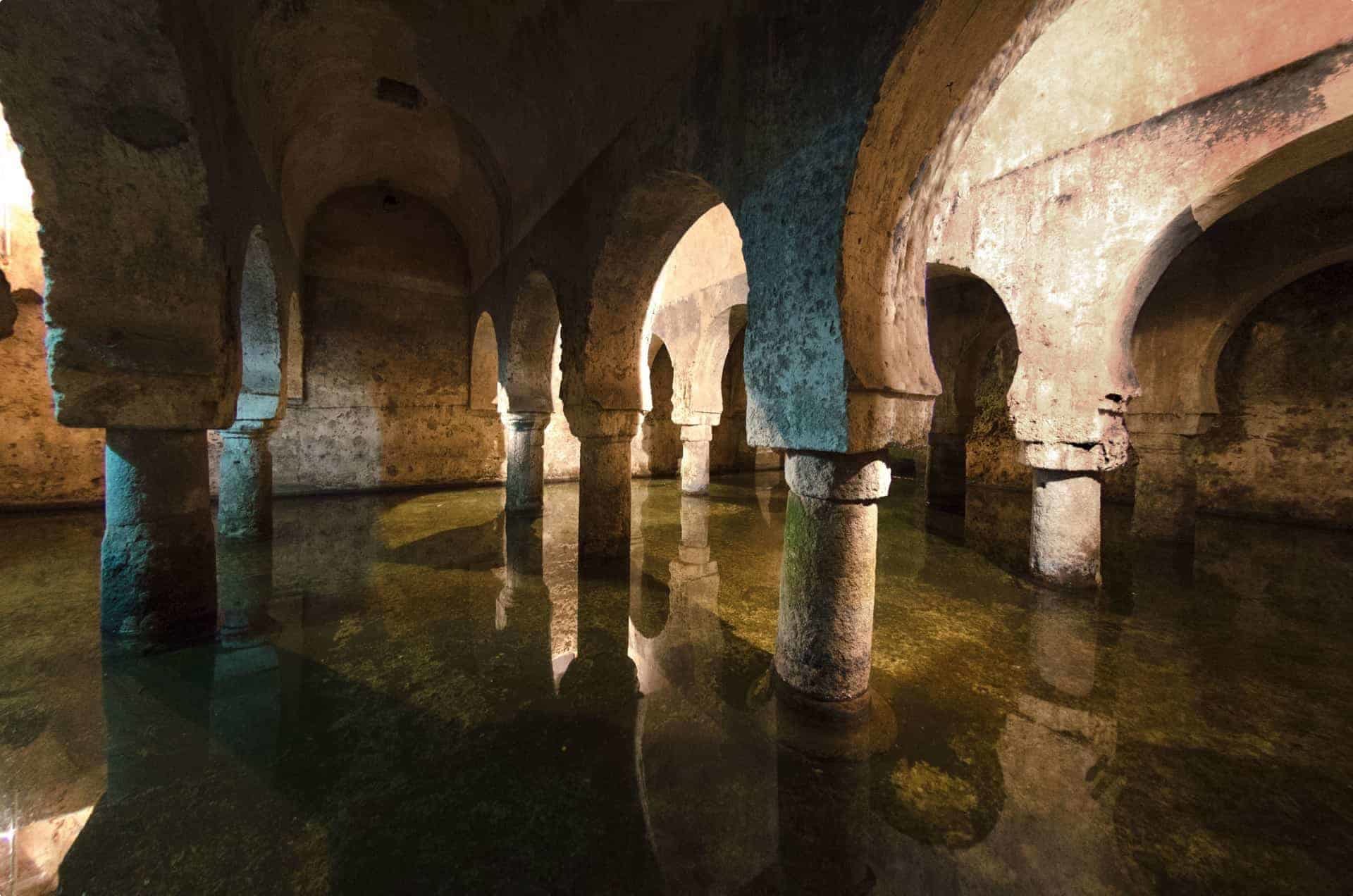
The city’s religious centre is the Caceres Church Cathedral of Santa Maria, which has a 16th century altarpiece made of cedar and pine wood and dedicated to the Assumption of the Virgin Mary. It houses the chapel of the crucified Cristo Negro (Black Christ), the highlight of the Catholic procession in Caceres during Holy Week.
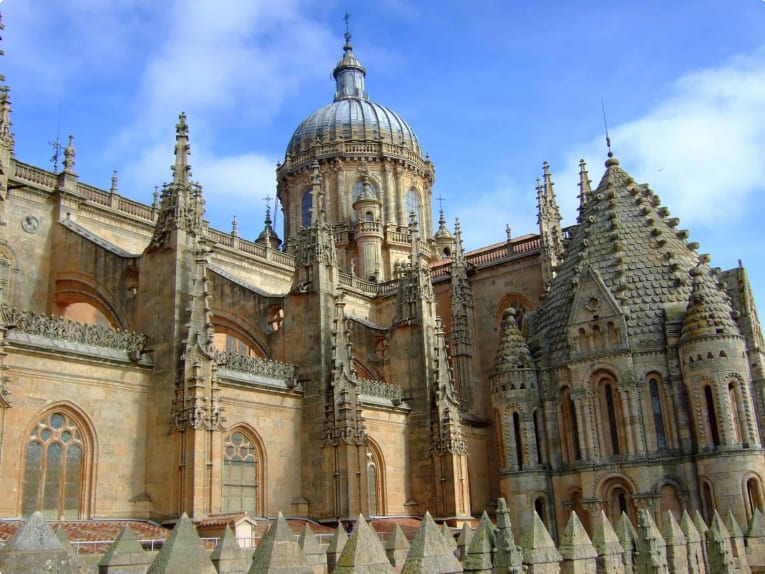
Salamanca offers its own, albeit smaller, Puente Romano to visitors entering its city, but despite being less imposing than its Méridan counterpart, Salamanca’s bridge offers an exceptional skyline showcasing the Romanesque towers of its cathedral—a sight for sore eyes (and sore feet). It is home to the oldest university in Spain, the University of Salamanca, founded in 1134, and numerous museums and palatial buildings.
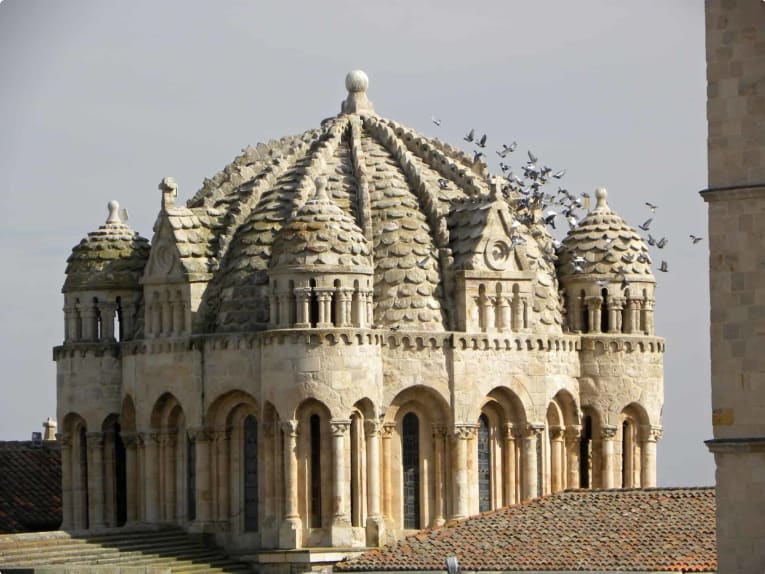
Zamora, formerly the Roman town of Ocellum Duri, has several Romanesque churches and buildings that retained their original features. The Zamora Cathedral is hailed as one of the most important examples of Romanesque architecture in Spain, with its distinctive dome based upon Istanbul’s Hagia Sophia serving as a symbol of the city.
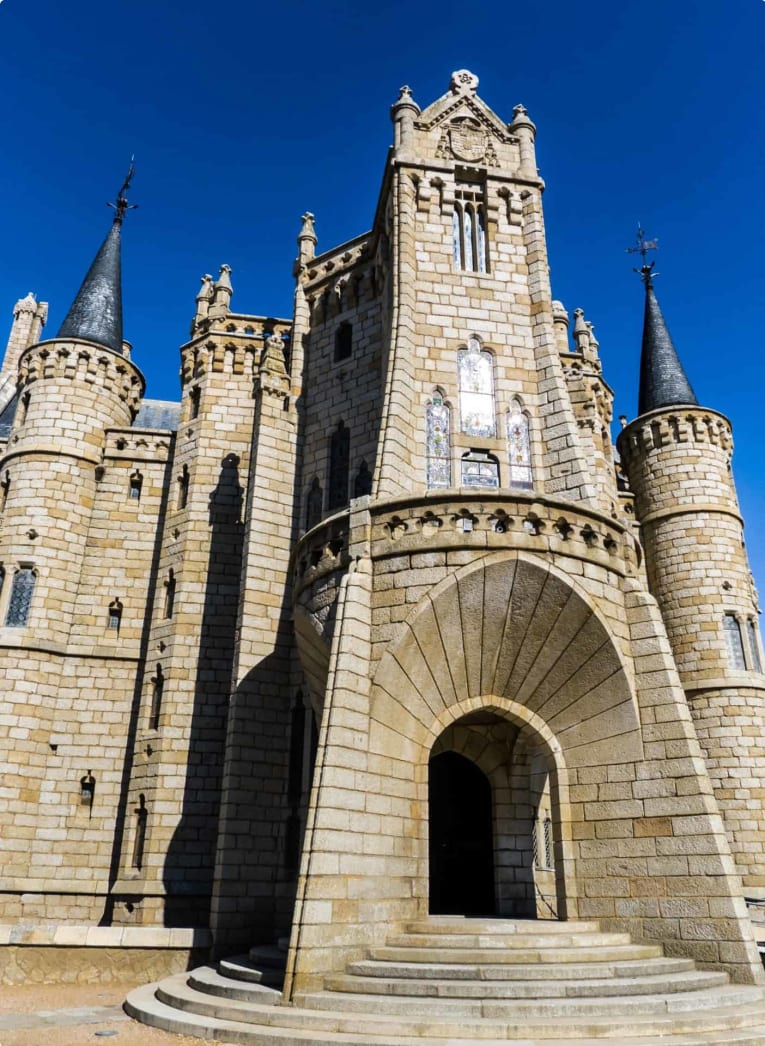
Astorga was established by the Romans in 14 BC as Asturica Augusta. Astorga houses many architectural marvels, one of which is the late 19th century Episcopal Palace designed by the Modernist architect Antoni Gaudi, famous for his design of the Sagrada Familia church in Barcelona. Another is the Astorga Cathedral (Catedral de Santa María de Astorga). Construction of this Gothic cathedral began in the 14th century on top of a Romanesque church, and was not finished until the 18th century, leading to the assimilation of Renaissance and Baroque styles in the cathedral’s architecture, particularly in its west façade and towers.

The Silver Way ends in Leon. Its rich history is mirrored in its wealth of historic buildings. Leon’s Cathedral, the Catedral de Santa María de Regla de Leon, is a masterpiece of French Gothic architecture, and the Romanesque Basílica de San Isidoro is the site of the royal burial chapel and houses the relics of St. Isidore of Seville. Another site to visit is the fortress-like Casa Botines, designed by Gaudi.
Right next to Casa Botines is the the Palace of the Guzamanes, the seat of the provincial government of Leon. We will also visit the Leon Museum, the colourful Museo de Arte Contemporaneo, covered in sheets of glass, and the old convent of San Marcos that is now a stunning luxury hotel, considered to be one of the most important Spanish Renaissance buildings in Spain.

While feasting their eyes on the visual wonders of the route, travellers walking the Via de la Plata can also partake of the unique cuisine the region has to offer. Try fresh food at the marketplaces and get your fill of tapas, jamón ibérico, paella, churros, and wine while you rest your feet during this long journey.
Via Coloniensis: Pilgrims’ Walk from Cologne to Trier
There are many European paths to the shrine of the apostle. In Germany alone are thirty major routes leading pilgrims bound for Santiago de Compostela across the border to France, where they can walk the Via Podiensis. One of these German routes is the Via Coloniensis, which retained its Latin name rather than being known by the German term “Jakobsweg” (Way of St. James) given to Germany’s other routes.
Via Coloniensis runs between two of Germany’s important Roman cities, Cologne and Trier. This route passes through rolling countryside and woodlands, towns dotted by historic monuments and architecture, before entering Germany’s oldest city.

The journey begins in Cologne, originally a small Roman encampment founded in 38 BC on the banks of the Rhine. It was originally named Colonia Claudia Ara Agrippinensium (shortened to Colonia) after General Agrippa and Agrippina, wife of Emperor Claudius. A city hallmark is the massive Cologne Cathedral, which dates back to 1248 and was declared a UNESCO World Heritage Site in 1996. The Gothic cathedral, which can hold 20,000 people, has breathtaking stained-glass windows and houses the shrine of the Magi or the Three Wise Men, a pilgrimage site unto itself.
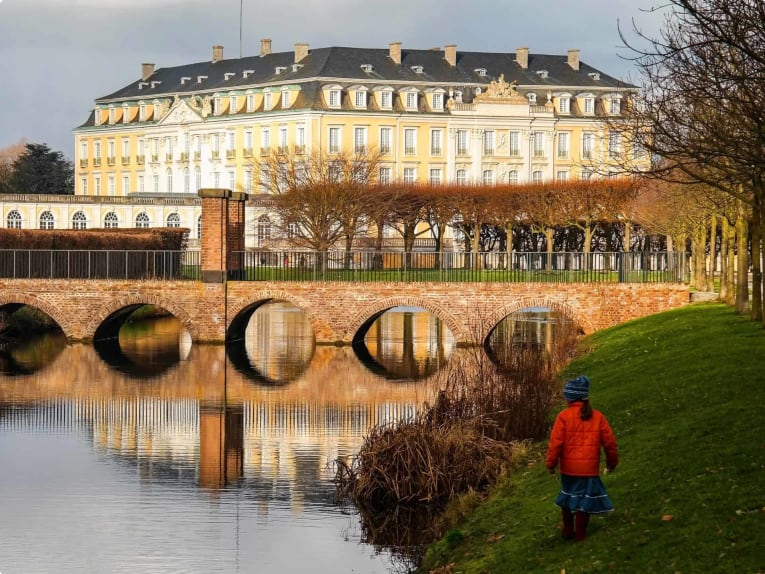
Travellers will pass right in front of the Augustusburg Palace in Brühl, 13 kilometres (or 8 miles) south of Cologne. The palace served as residence of the prince-archbishops of Cologne and is the best example of early 18th century Rococo architecture in Germany. The Augustusburg Palace and the Falkenlust hunting lodge sitting in the same garden complex were listed together as a World Heritage Site in 1984.
The journey continues through the spa town of Bad Münstereifel and the medieval town of Blankenheim filled with beautiful, timber-framed houses, and into the town of Prüm. In the center of the town is the Basilica of the Transfiguration of Our Lord (Basilika St. Salvator), an 8th century abbey founded by the Benedictine order and now a minor basilica that serves as the town’s parish church.
The Via Coloniensis then passes through the village of Waxweiler at the foot of a valley and through the wooded areas and cereal fields of the Eifel National Park.
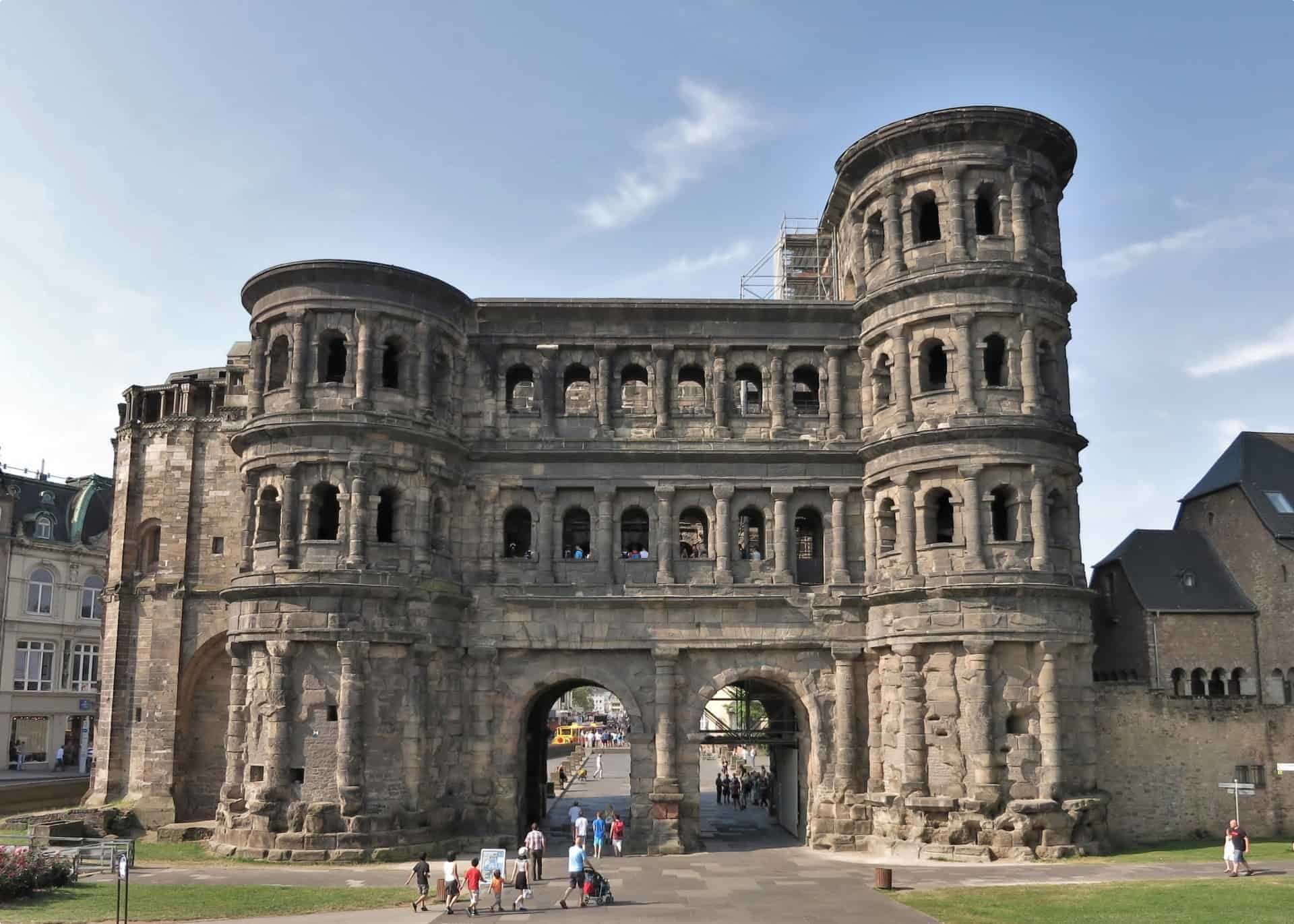
Trier, the final stop on this route, is located on the banks of the Roselle River which joins the Rhine. Travellers can go on a river cruise and taste the white wine named after the river. Trier, once known as the “second Rome”, was once the Roman settlement Augusta Treverorum, and was a favourite residence of Constantine the Great. Trier’s preserved Roman monuments, such as the 2nd century fortified gate Porta Nigra, the Basilica of Constantine, the Cathedral of St. Peter, and the Church of Our Lady, were all listed as World Heritage Sites by UNESCO in 1986.
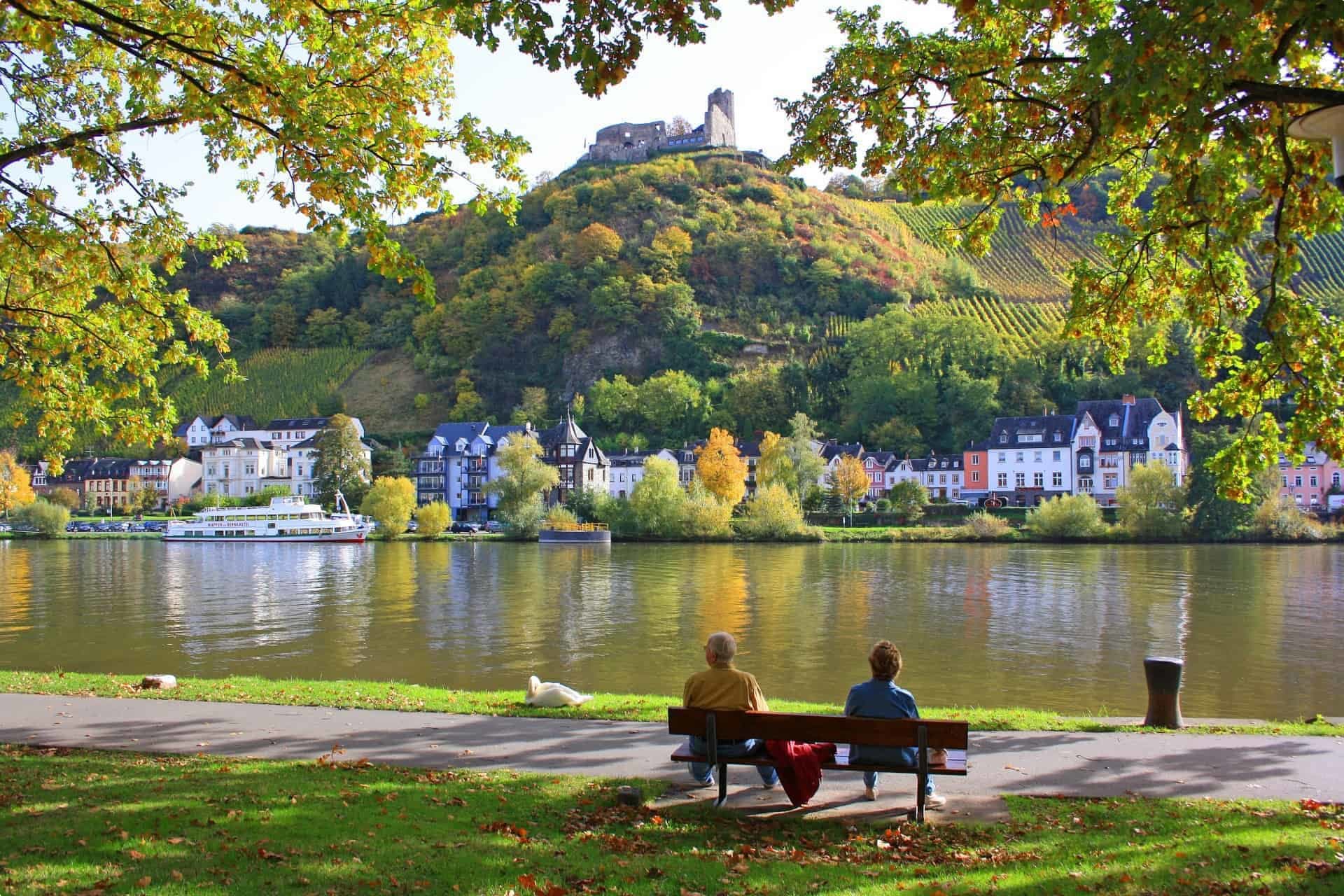
Via Francigena: Pilgrims’ Walk from Great St. Bernard Pass to Rome
Via Francigena, or The Way Through France, is an ancient route that connects Canterbury to Rome and goes through half the continent of Europe and four countries: England in the United Kingdom, France, Switzerland, and Italy. Sigeric, the 10th century Archbishop of Canterbury, took this route to receive his pallium (liturgical vestment) from the Pope in 990, and wrote down his itinerary upon his return. It is this account of his journey that modern travellers follow to take the same route.
For this tour, we begin with a drive through the Great St. Bernard Pass, the third highest road pass in Switzerland connecting Martigny in Switzerland to Aosta in Italy. This will be a beautiful hour-long drive with views of the snow-covered Alps.
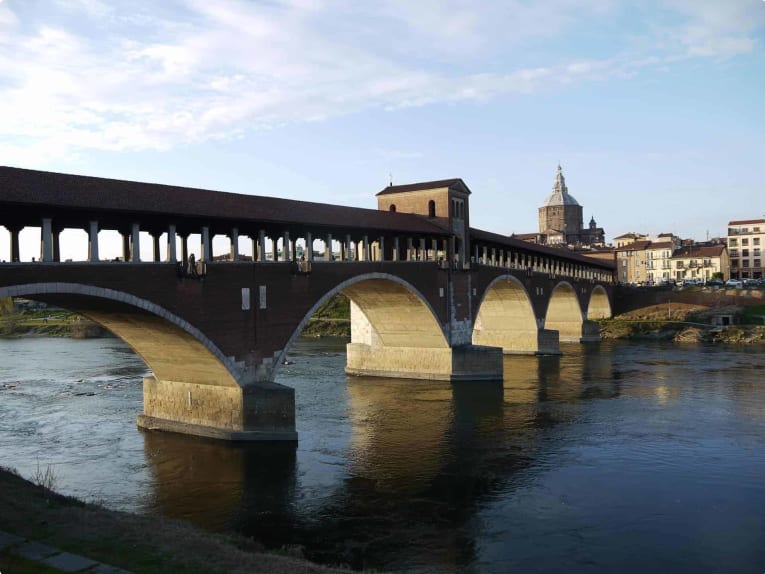
Travellers will begin walking in Pavia in northern Italy. Pavia was established in 220 BC as a military camp named Ticinum, after the Ticino River where the city is located, and has witnessed the coronations of great historical figures such as Charlemagne and Barbarossa. Travellers entering the city will take the covered bridge Ponte Coperto over the river. Key churches to explore are the San Michele Maggiore, an important example of Lombard-Romanesque architecture, and the 12th century San Pietro in Ciel d’Oro (St. Peter in Golden Sky), the burial place of St. Augustine.
Next stop is the charming town of Lucca located at the foot of the Apuan Alps. Colonized by Rome in the early second century BC, Lucca retains its Roman influences in the numerous marble columns of the city’s main square, Piazza San Michele, and in the church of San Michele in Foro from which the piazza takes its name. The church, founded in the 8th century, has an imposing marble statue depicting the archangel Michael defeating a dragon with a spear.
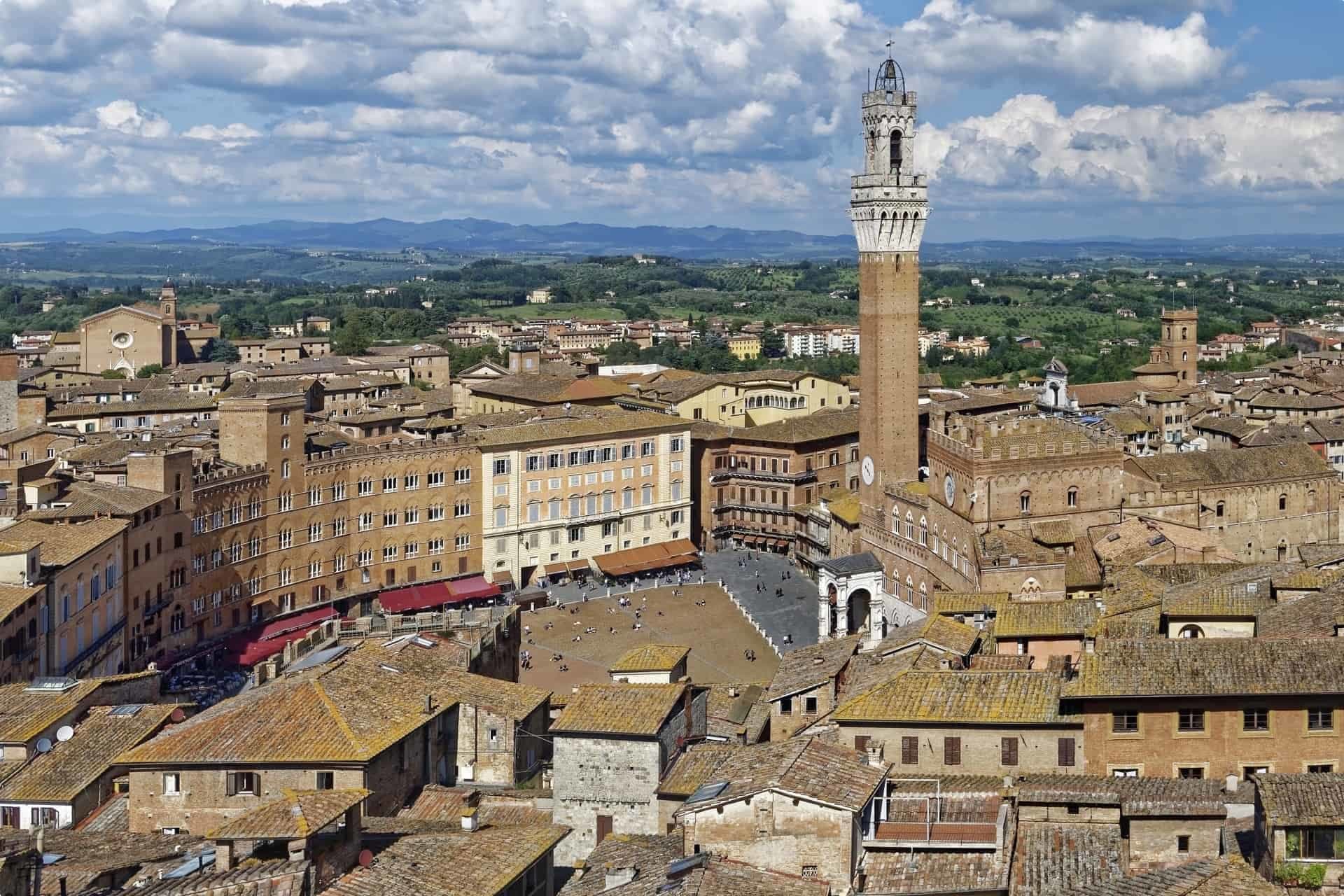
Travellers move on to Siena where they will be treated to the city’s magnificent Gothic architecture, preserved through the centuries. Established as the military colony Saena Julia in the first century BC, Siena is a well-loved tourist attraction and home of the famous Palio de Siena, a horse race held twice a year. At the heart of the city is the fan-shaped Piazza del Campo, at the central intersection of the city’s three hillside communities. Travellers should not miss the Siena Cathedral (Duomo), with its intricate façade and equally impressive interior decorated with striped marble, and the Santa Maria della Scala, a former hospital now turned museum with an emphasis on its legacy for caring for pilgrims traveling the Via Francigena.
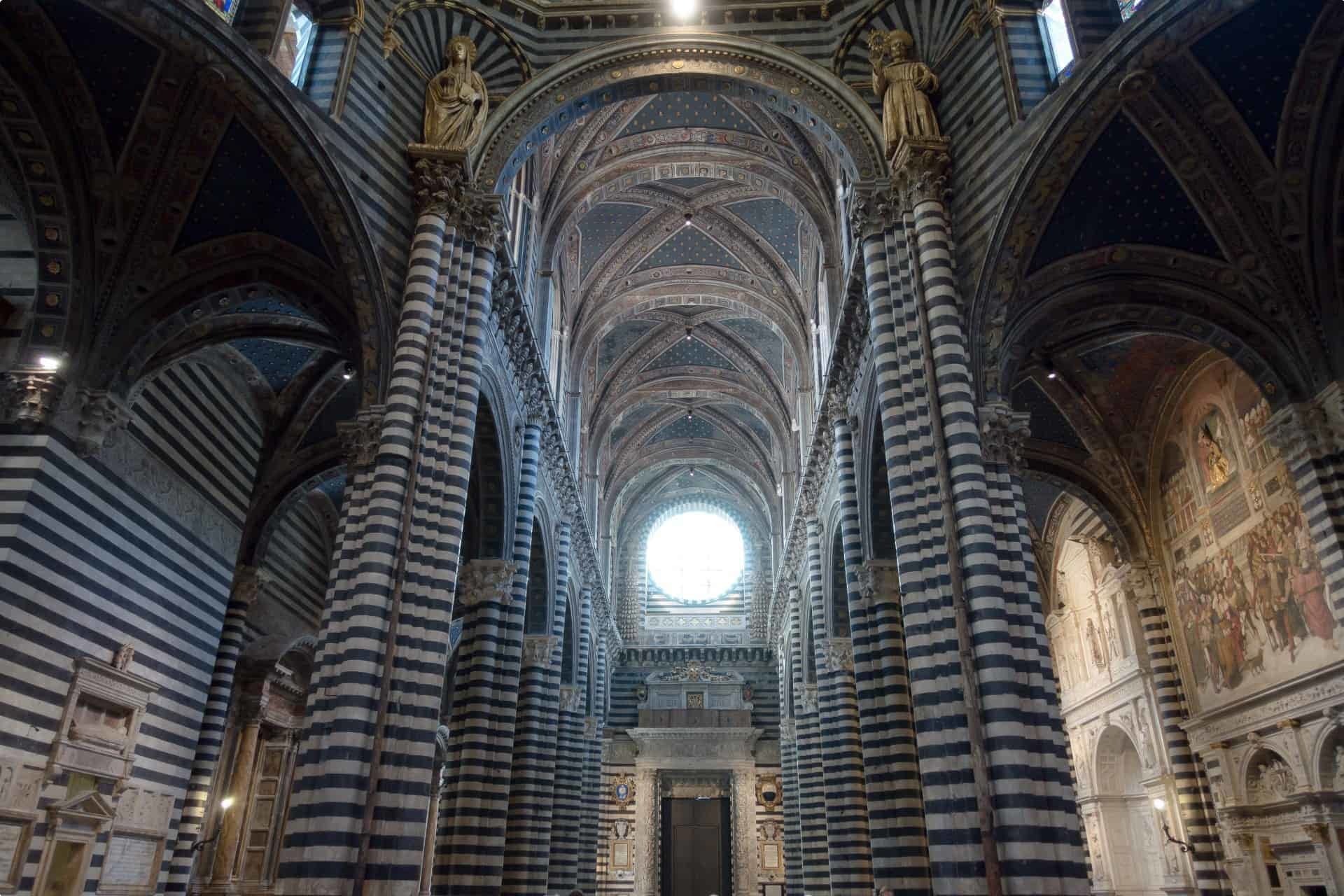
Rome is the final destination of this route. The famous dome of St. Peter’s Basilica, designed, in succession, by Michelangelo, Giacomo Della Porta, and Carlo Maderno, is a distinctive landmark. Upon entering the lavish interiors of the basilica, travellers will be greeted by Michaelangelo’s moving Pieta and the statue of St. Peter sitting on his throne. The right foot of St. Peter’s statue has been worn down from the touches of the hundreds of thousands of visitors and devotees. Travellers, if able, may also choose to climb up to the top of the dome to see a stunning view of St. Peter’s Square and, on a clear day, the rest of the city.
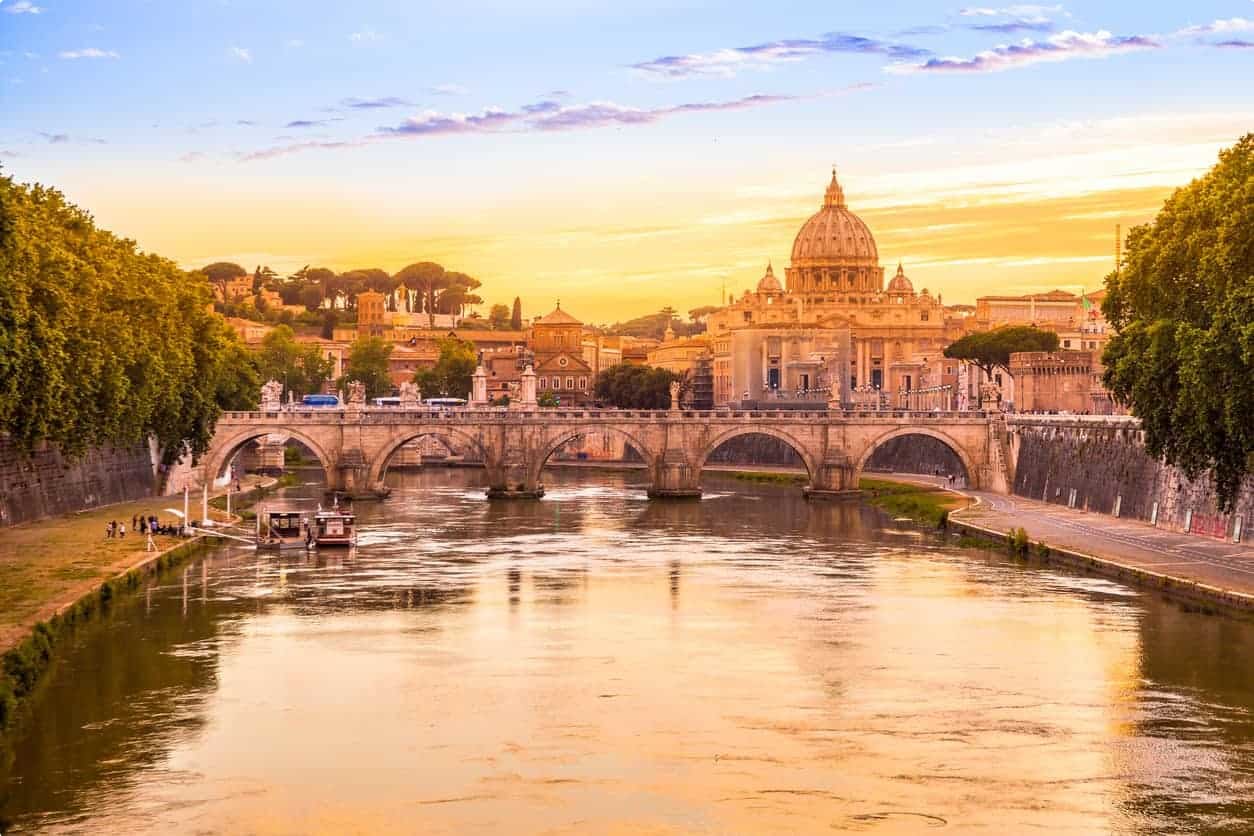
Are you ready to go walking?
It is always better to be prepared by gathering more information. Odyssey Traveller has several articles available for you, including these essential reads:
- Read up on the other great pilgrimage routes in Europe.
- Take note of these tips to prepare for a walking tour.
- Know what to wear.
- Check travel tips related to health, safety, and transportation. Read Part 1 and Part 2 here.
Odyssey Traveller organises small group walking tours following the path of medieval pilgrims in Europe. These tours are structured with the senior or mature traveller in mind. They are shorter in duration compared to the traditional routes as Odyssey’s program leaders have chosen relevant sections to maximise the trip, hand-picking historic landmarks for the itinerary and combining walking with transportation. These tours also provide flexibility by allowing travellers to decide the activities they wish to participate in.
Once you’re ready, come join us on the Camino or the Via de la Plata. Happy walking!
About Odyssey Traveller

Odyssey Traveller is committed to charitable activities that support the environment and cultural development of Australian and New Zealand communities. Accordingly, we are pleased to announce that since 2012, Odyssey has been awarding $10,000 Equity & Merit Cash Scholarships each year. We award scholarships on the basis of academic performance and demonstrated financial need. We award at least one scholarship per year. We’re supported through our educational travel programs, and your participation helps Odyssey achieve its goals.
For more information on Odyssey Traveller and our educational small group tours, visit our website. Alternatively, please call or send an email. We’d love to hear from you!
Related Tours
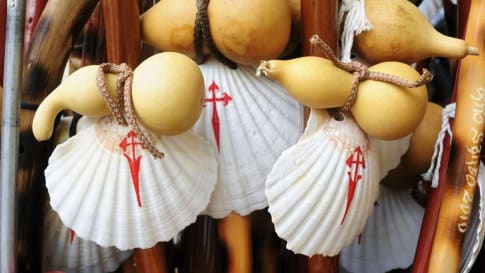
19 days
Sep, Jun, AugSaint James Way Small Group Walking Tour (The Camino)- Spain
Visiting Portugal, Spain
Experience pleasant sections of the Way of Saint James, crossing some of Spain’s most beautiful landscapes. We follow the pilgrims on easy distances of The Way to the mythical destination, Santiago de Compostella. Not since the middle ages has this adventure for body and mind been more popular. We also get to discover the artistic highlights and rich history of Northern Spain and Portugal, as well as enjoying local wines and exquisite food.
From A$14,135 AUD
View Tour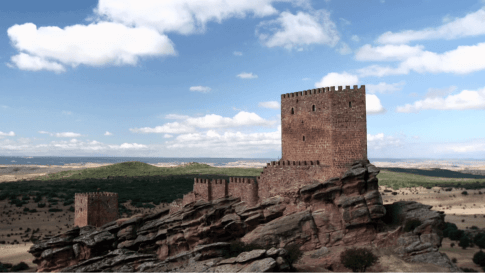
20 days
May, SepVia de la Plata: Small Group Walking Tour in the Footsteps of Pilgrims
Visiting Spain
Visits to UNESCO World Heritage Sites introduced by local guides feature on this walking tour for mature couple and single travellers in central Spain. The days itineraries to selected destinations provide authentic experiences in central Spain. A single supplement is charged for solo travelers on these small group journeys.
From A$14,245 AUD
View Tour
